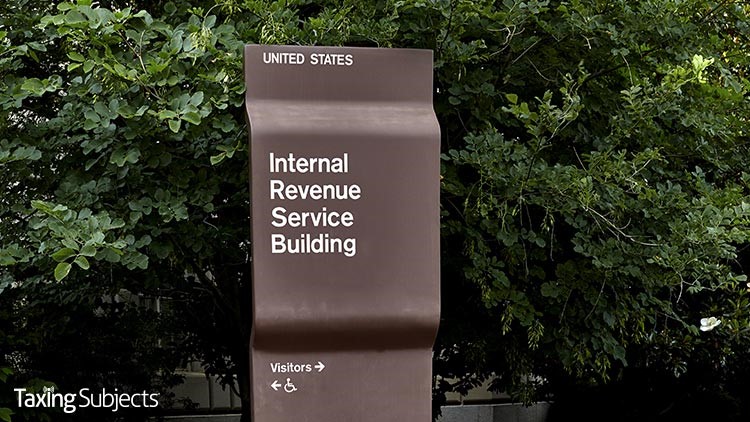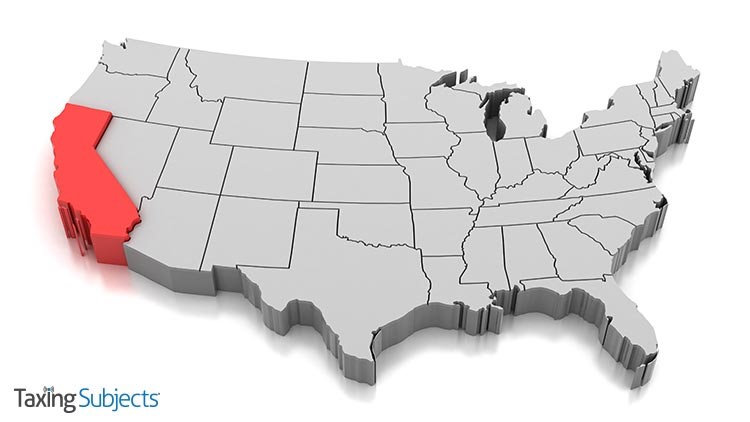
by | Feb 28, 2021 | Tax Tips and News
The Internal Revenue Service has issued an alert covering amended returns and claims for the Domestic Production Activities Deduction, also known as DPAD.
This provision of tax law was repealed as part of the Tax Cuts and Jobs Act for taxable years after Dec. 31, 2017.
Since the repeal, the IRS has gotten “a wave” of questionable amended returns and claims for tax benefits that amount to billions of dollars.
Drilling for a gusher in tax benefits
“We have no qualms with taxpayers claiming benefits allowed by law,” said Doug O’Donnell, Commissioner, Large Business and International Division. “But a very high percentage of the claims for the now-repealed Domestic Production Activities Deduction are not properly supported by those claiming it.”
According to the IRS, a “large majority” of the questionable filings involve taxpayers claiming DPAD for the first time based on studies conducted after the fact, which contain unreasonable assumptions of facts and the law.
In 2018, the IRS’ Large Business and International Division (LB&I) launched a campaign to risk-assess claims or amended returns under the repealed section of the law.
The IRS will continue to audit the issue even though the section was repealed.
DPAD claims are being audited with the support of Chief Counsel, engineer specialists and the Corporate Income and Losses Practices Network.
The IRS issued a General Legal Advice Memorandum (GLAM) in July 2020 that addresses examples of meritless section 199 online software activity.
In many cases, the IRS says, taxpayers have conceded 100% of their claim once it was challenged. The IRS continues to take such section 199 cases to court.
Documentation is key
Examiners have been told to consider a number of factors in their investigations.
When appropriate, these include:
- Penalties set out in Section 6676, Erroneous Claim for Refund or Credit;
- Other applicable penalties;
- And referrals to the Office of Professional Responsibility (OPR).
Taxpayers and their advisors, the IRS notes, should ensure they have documentation to support their position. They should also expect the IRS to impose appropriate penalties unless the taxpayers can establish reasonable cause.
The IRS stresses that a study does not necessarily provide such reasonable cause.
“Meritless claims are harmful to tax administration and voluntary compliance. Any corporate taxpayer who is considering filing such a claim should reconsider. Taxpayers who have already filed can withdraw prior to IRS audit contact to avoid penalties,” said O’Donnell.
– Story provided by TaxingSubjects.com

by | Feb 27, 2021 | Tax Tips and News
Taxpayers with income from farming or fishing face a March 1 deadline for filing their income taxes. But the IRS reminds them they can avoid making any estimated tax payments by filing and paying their entire tax due on or before the deadline.
The rule generally applies if farming or fishing income amounted to at least two-thirds of the taxpayer’s total gross income in either the current or the preceding tax year.
To avoid an estimated tax penalty, taxpayers who don’t file by March 1 should have made an estimated tax payment no later than Jan. 15.
Refer to Publication 505, Tax Withholding and Estimated Tax for more information.
What do farmers and fishers need to file?
Taxpayers in the farming business report income and expenses on Schedule F (Form 1040), Profit or Loss From Farming. They also use Schedule SE (Form 1040), Self-Employment Tax to figure self-employment tax if their net earnings from farming are $400 or more. See Topic No. 554, Publication 225, Farmer’s Tax Guide and Agriculture Tax Center for more information.
Taxpayers in the fishing business report income and expenses on Schedule C (Form 1040), Profit or Loss From Business (Sole Proprietorship). They also use Schedule SE (Form 1040) to figure self-employment tax if their net earnings from fishing are $400 or more. For general information about the rules applying to individual taxpayers – including commercial fishermen who file Schedule C – refer to Publication 334, Tax Guide for Small Business.
Save time with IRS Direct Pay
IRS Direct Pay is a free online service. It allows people to make same-day payments or schedule them up to 365 days in advance from a checking or savings account.
There are no IRS fees and no pre-registration.
The service is available seven days a week, and users get immediate confirmation after the submit a payment. They can also opt-in to get email notifications.
Taxpayers should note, however, that IRS Direct Pay cannot be used to pay the federal highway use tax, payroll taxes or other business taxes. Taxpayers seeking to pay those business taxes electronically can enroll in the Electronic Federal Tax Payment System (EFTPS), which is also a free service.
For more information about payment options, check out IRS.gov/payments.
Source: IR-2021-42
– Story provided by TaxingSubjects.com

by | Feb 26, 2021 | Tax Tips and News
Unemployment claims may have fallen since the initial months of the pandemic, but millions of Americans continue to struggle with long-term joblessness and medical bills caused by the coronavirus. While a third round of federal Economic Impact Payments is expected this year, qualifying Californians will also receive a separate, state-issued payment: The Golden State Stimulus.
According to the “Golden State Stimulus” page on the State of California Franchise Tax Board website, most qualifying low-income California residents will automatically receive a $600 or $1,200 payment 45 to 60 days after filing their tax year 2020 state return—provided they file by Oct. 15, 2021 and meet other criteria.
Who qualifies for the Golden State Stimulus payment?
Generally, two groups of California residents can qualify for the Golden State Stimulus:
- CalEITC beneficiaries making $30,000 or less
- ITIN holders making $75,000 or less
Those who change their permanent residence to another state or country before the state actually issues a stimulus payment may not qualify, even if they would otherwise meet all other prerequisites.
Are there resources to help determine Golden State Stimulus eligibility?
The FTP site provides the following tables to help qualifying Californians determine the amount they are eligible to receive and what they should do to get a payment.
The first table shows how being a CalEITC recipient, ITIN holder, or joint filer can affect the amount of the stimulus payment:
|
Your stimulus amount
|
|
On your 2020 tax return…
|
Stimulus amount
|
|
You are a CalEITC recipient with an SSN
|
$600
|
|
You are a CalEITC recipient with an ITIN
|
$1,200
|
|
You are not a CalEITC recipient, but you:
- File with an ITIN and
- Made $75,000 or less (total CA AGI)
|
$600
|
|
You file a joint return and:
- At least one of you files with an ITIN
- Made $75,000 or less (total CA AGI)
|
$600
|
|
You file a joint return and:
- You are a CalEITC recipient
- At least one of you files with an ITIN
|
$1,200
|
The second table contains four scenarios that can affect stimulus eligibility, like qualifying for CalEITC but not claiming it on the 2020 return:
|
Scenarios for claiming the Golden State Stimulus
|
|
Scenario
|
What to do
|
|
You already filed your 2020 taxes and received a CalEITC refund.
|
You don’t need to do anything. You will receive your payment by direct deposit or paper check.
|
|
You filed your 2020 taxes with your ITIN and made $75,000 or less (total CA AGI).
|
You don’t need to do anything. You will receive your payment by direct deposit or paper check.
|
|
You filed your 2020 taxes but did not claim CalEITC and you’re eligible for CalEITC.
|
Amend your 2020 tax return immediately.
|
|
You will file a 2020 tax return but will not claim CalEITC.
|
You may still be eligible for the stimulus payment for 2020 if you (or your spouse):
- File with an ITIN and
- Made $75,000 or less (total CA AGI)
Be sure to file your 2020 tax return no later than October 15, 2021.
|
A final note: These stimulus payments are set to expire on November 15, 2021. That’s why the FTB recommends qualifying California residents file their 2020 return by October 15. Otherwise, they risk losing their payment.
For more information about the Golden State Stimulus, visit FTB.CA.gov.
Source: “Golden State Stimulus,” FTB.CA.gov/About-FTB/Newsroom/Golden-State-Stimulus/index.html
– Story provided by TaxingSubjects.com

by | Feb 25, 2021 | Tax Tips and News
Texas taxpayers impacted by this month’s brutal winter storms are getting some help from the Internal Revenue Service. The help includes extended deadlines and other relief measures.
The entire state of Texas is included disaster declaration issued by the Federal Emergency Management Agency (FEMA) and the IRS’ relief measures apply to all the counties in the FEMA declaration.
Any counties outside of Texas that are added to the disaster declaration will automatically qualify for the IRS relief package as well. The list of eligible counties and localities is available on the disaster relief page on IRS.gov.
Extension to file and pay
The tax relief announcement postpones various tax filing and payment deadlines that kicked in with the beginning of the filing season on Feb. 11. For Texas taxpayers, affected individuals and businesses now have until June 15, 2021, to file their returns and pay any tax originally due during the period.
The extension includes 2020 individual and business returns normally due on April 15, as well as the various 2020 business returns that would have been due on March 15. It also means affected Texas taxpayers now have until June 15 to make 2020 IRA contributions.
Also included in the relief package are quarterly estimated income tax payments normally due April 15, and quarterly payroll and excise tax returns normally due April 30. The extension also applies to tax-exempt organizations operating on a calendar-year basis, that have a 2020 return due on May 17.
Penalties on payroll and excise tax deposits due on or after Feb. 11 and before Feb. 26 will be abated as long as the deposits are made by Feb. 26.
The IRS disaster relief page has details on other return types, payments and tax-related actions qualifying for the additional time.
Tax relief is automatic
Taxpayers do not need to contact the IRS in order to qualify for the extensions and other relief. As long as the taxpayer’s address of record is in the federally declared disaster area, the extended deadlines are automatically applied.
If an affected taxpayer gets a late-filing or late-payment penalty notice from the IRS that has an original or extended filing, payment or deposit due dat that falls within the postponement period, the taxpayer should call the phone number printed on the notice to have the penalty abated.
An IRS statement says the agency is ready to help those taxpayers who may have affected by the winter storm but who live outside the current disaster area.
“The IRS will work with any taxpayer who lives outside the disaster area but whose records necessary to meet a deadline occurring during the postponement period are located in the affected area. Taxpayers qualifying for relief who live outside the disaster area need to contact the IRS at 866-562-5227. This also includes workers assisting the relief activities who are affiliated with a recognized government or philanthropic organization,” the IRS states.
Declaring losses
Individuals or businesses in a federally declared disaster area who suffered uninsured or unreimbursed disaster-related can claim them on either the return for the year the loss occurred (in this case, the 2021 return normally filed next year), or the return for the prior year. Taxpayers can, if they choose, claim these losses on the 2020 return they fill out this tax season.
Be sure to write the FEMA declaration number—4586—on any return claiming a loss.
The tax relief package is part of a coordinated federal response to the damage caused by this winter storm and is based on local damage assessments by FEMA. For more information on disaster recovery, visit disasterassistance.gov.
Source: IR-2021-43
– Story provided by TaxingSubjects.com

by | Feb 21, 2021 | Tax Tips and News
Tax professionals across the country have undoubtedly served clients who lost health insurance due to layoffs, a reduction in work hours, or another issue stemming from the coronavirus pandemic. The one-two punch of reduced income and possible uninsured medical expenses can be devastating for these families.
To help address this need, the president opened a special enrollment period for the Health Insurance Marketplace on HealthCare.gov, giving uninsured and underinsured Americans another opportunity to get coverage. Unfortunately, many may not be aware that the marketplace is open or how to even use it, which is why the Centers for Medicare & Medicaid Services (CMS) is asking tax professionals to help spread the word.
To help tax pros be better prepared for these conversations, the agency created a fact sheet on CMS.gov: “2021 Special Enrollment Period in response to the COVID-19 Emergency.”
How long is the HealthCare.gov special enrollment period open?
The HealthCare.gov special enrollment period runs from February 15, 2021 to May 15, 2021. While applications are due by May 15, the fact sheet on CMS.gov notes that “consumers will have 30 days after they submit their application to choose a plan.” Currently enrolled consumers can also use this period to adjust their current plan.
How do eligible consumers sign up for health insurance through the Health Insurance Marketplace?
Eligible consumers can visit HealthCare.gov or call 1.800.318.2596 to sign up for health insurance through the Health Insurance Marketplace. The CMS fact sheet includes a link to the “Getting Marketplace Health Insurance” quick guide on HealthCare.gov.
How much do HealthCare.gov health insurance plans cost?
According to CMS, roughly 75 percent of those who are enrolled through the Health Insurance Marketplace received financial assistance that reduced their monthly insurance cost to $50 or less.
Source: “2021 Special Enrollment Period,” CMS.gov
– Story provided by TaxingSubjects.com









